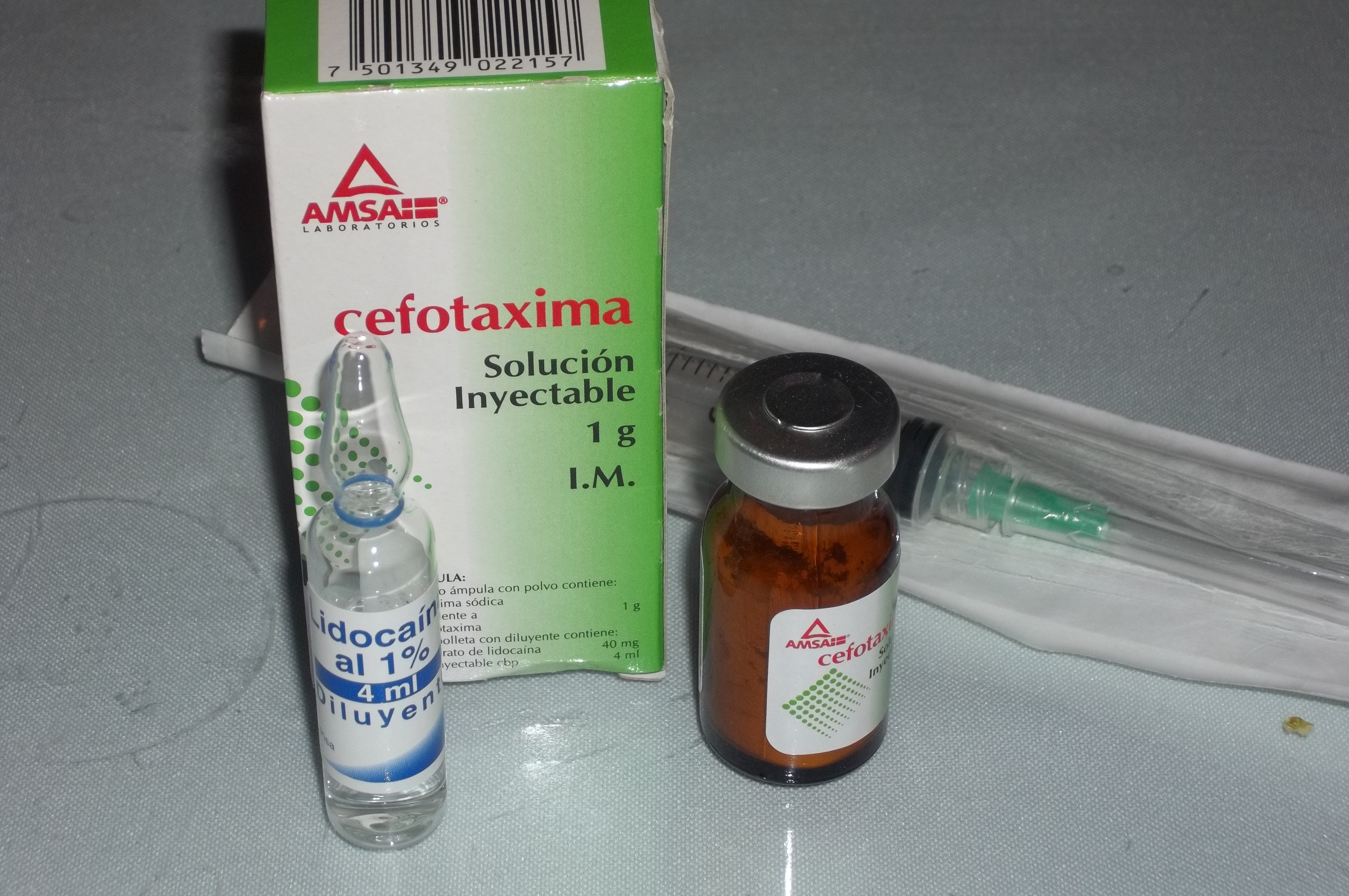| drug name | Cefotaxime |
| classification | Third-generation cephalosporin antibiotic |
| pharmacokinetics | | absorption | Well absorbed after intramuscular or intravenous administration. Oral absorption is poor. | | distribution | Distributes widely throughout the body, including the cerebrospinal fluid (CSF) with adequate doses. | | metabolism | Metabolized primarily by the liver. | | excretion | Excreted primarily in the urine as unchanged drug or metabolites. |
|
| suggested dosage | | adult | | IV | 1-2 grams every 6-8 hours | | IM | 1-2 grams every 6-8 hours | | note | Dosage may vary depending on the severity and type of infection. Consult with a healthcare professional for appropriate dosage. |
| | children | Dosage is weight-dependent and specific to the indication. Consult with a physician. |
|
| indications | | 1 | Bacterial infections of the respiratory tract (pneumonia) | | 2 | Bacterial infections of the urinary tract | | 3 | Bacterial infections of the skin and soft tissues | | 4 | Bacterial meningitis (with appropriate supportive treatment) | | 5 | Bacterial infections of the bones and joints | | 6 | Septicemia |
|
| safety in pregnancy | Generally considered safe in pregnancy. However, use only when clinically indicated and under close monitoring by a healthcare professional. Potential risks should be weighed against the potential benefits. |
| safety in breastfeeding | Cefotaxime can be secreted into breast milk. It is generally considered safe to use in breastfeeding mothers in clinical situations requiring use of this drug, but close monitoring of the infant is important. Consult with a physician for the most appropriate management in breastfeeding patients. |
| side effects | | 1 | Nausea | | 2 | Vomiting | | 3 | Diarrhea | | 4 | Abdominal pain | | 5 | Headache | | 6 | Superinfections (e.g., yeast infections) | | 7 | Allergic reactions (rash, hives, anaphylaxis) | | 8 | Clotting disorders in severe cases | | 9 | Blood dyscrasias (rare) | | 10 | Convulsions (rare in normal doses) |
|
| alternatives | |
| contraindications | | 1 | History of hypersensitivity to cephalosporins or penicillins (cross-reactivity is possible) | | 2 | Severe renal impairment | | 3 | Known allergic reactions to this class of medications | | 4 | Severe liver disease |
|
| interactions | | 1 | May interact with other medications, particularly anticoagulants, and/or drugs that affect the liver. Consult with a pharmacist to know of possible interactions. | | 2 | May alter the effectiveness of oral contraceptives |
|
| warnings and precautions | | 1 | Monitor kidney function closely, especially in patients with pre-existing renal impairment. | | 2 | Monitor for signs of superinfection, particularly in prolonged treatment. | | 3 | Patients should be observed closely for any allergic reactions. | | 4 | Use caution in patients with a history of blood disorders or conditions that increase the risk of bleeding. | | 5 | Adjust dosage for patients with severe renal impairment. |
|
| additional information | Appropriate culture and sensitivity testing is vital to determine the causative organism(s) and appropriate antibiotic choice for treatment. |
| patient information | | age | 25 | | weight | 70 | | gender | Male | | note | This information is for general knowledge and informational purposes only, and does not constitute medical advice. It is essential to consult with a qualified healthcare professional for any health concerns or before making any decisions related to your health or treatment. |
|
